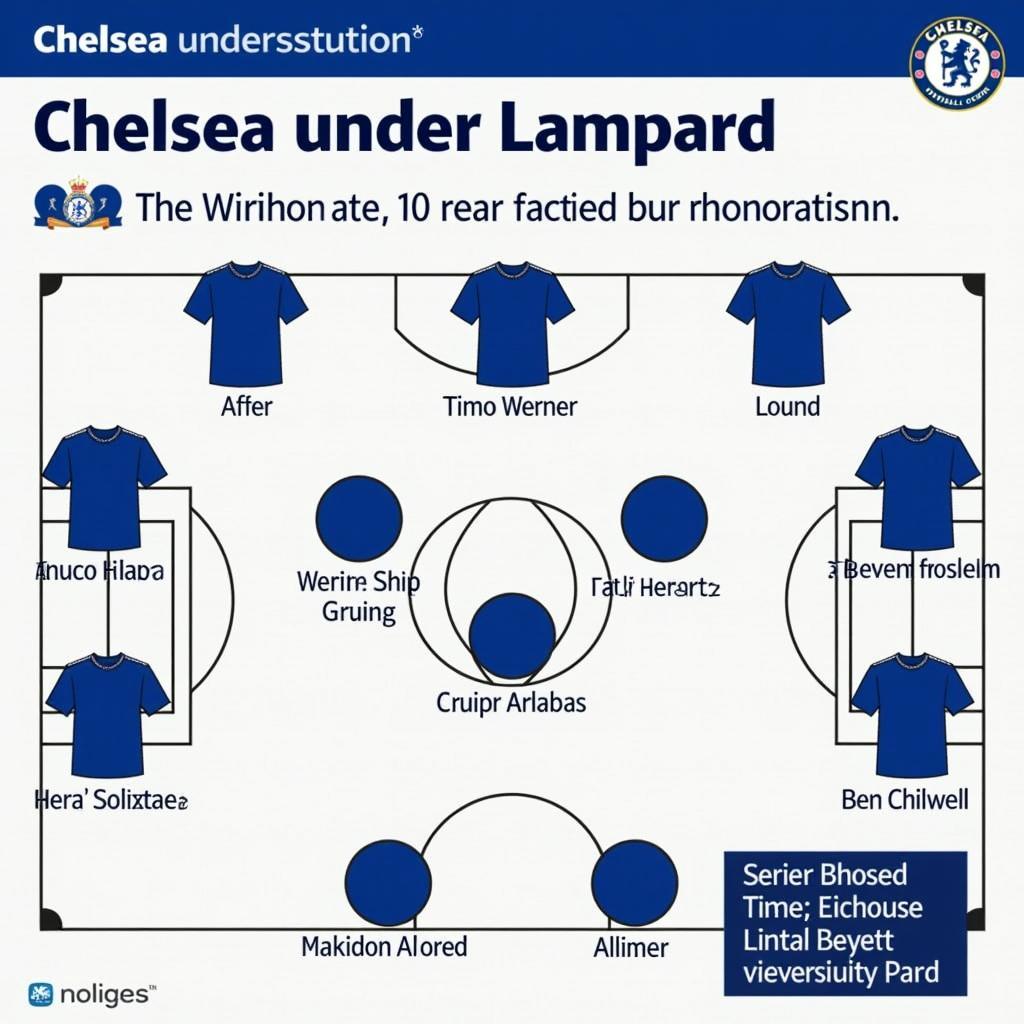Lampard’s Chelsea Squad: A Detailed Look at the Players
October 26, 2024Frank Lampard’s time as Chelsea manager was marked by a focus on youth and attacking football. Taking over the reins in 2019, he faced a transfer ban that forced him to rely on the academy players. This period saw the emergence of several young talents who went on to become key players for the club. Let’s dive deep into the squad that Lampard built, analyzing the key figures who defined his era at Stamford Bridge.
The Core of Lampard’s Chelsea: Young Stars and Experienced Campaigners
Lampard’s Chelsea was a blend of youth and experience. He inherited seasoned professionals like Cesar Azpilicueta, N’Golo Kanté, and Jorginho, who provided a strong spine to the team. However, it was the young blood that he injected into the squad that really caught the eye.
The Rise of the Academy Graduates
One of the hallmarks of Lampard’s tenure was the trust he placed in Chelsea’s academy graduates. Mason Mount, a technically gifted midfielder with an eye for goal, became a vital cog in the team. Reece James, a powerful and attack-minded right-back, also established himself as a first-team regular. Tammy Abraham, a prolific scorer at youth level, was given the responsibility of leading the line and responded with a flurry of goals. Fikayo Tomori, a strong and composed centre-back, also enjoyed a breakthrough season under Lampard’s guidance.
“These youngsters had the talent and the mentality to succeed at the highest level,” says former Chelsea player and pundit Pat Nevin. “Lampard’s bravery in giving them a chance paid off handsomely.”
Key Signings and Tactical Flexibility
 Lampard's Chelsea Key Signings and Formations
Lampard's Chelsea Key Signings and Formations
While promoting youth was a priority, Lampard also made some shrewd signings to bolster his squad. The arrivals of Timo Werner, a pacey and clinical forward, and Kai Havertz, a versatile attacking midfielder, added further firepower to the attack. Ben Chilwell, a dynamic left-back, was brought in to provide defensive solidity and attacking impetus down the flank. These signings allowed Lampard to experiment with different formations, switching between a 4-3-3, 4-2-3-1, and even a 3-4-3 at times.
A Legacy of Attacking Football and Unfulfilled Potential
Lampard’s Chelsea was characterized by its attacking brand of football. The team played with a high tempo, pressing high up the pitch and creating numerous scoring chances. However, defensive frailties often proved costly, preventing them from challenging for the Premier League title. Despite this, Lampard’s side managed to secure a top-four finish in his first season in charge, showcasing their potential.
“Lampard’s Chelsea played some exhilarating football,” says football writer Jonathan Wilson. “They were a joy to watch, even if they were a bit naive defensively at times.”
Conclusion
While Lampard’s time at Chelsea ultimately ended in disappointment, his impact on the club cannot be understated. He laid the foundation for future success, blooding a new generation of talent and instilling an attacking philosophy. The players he nurtured and the style of play he implemented continue to influence Chelsea today. His tenure serves as a testament to the importance of giving youth a chance and playing attractive, attacking football.